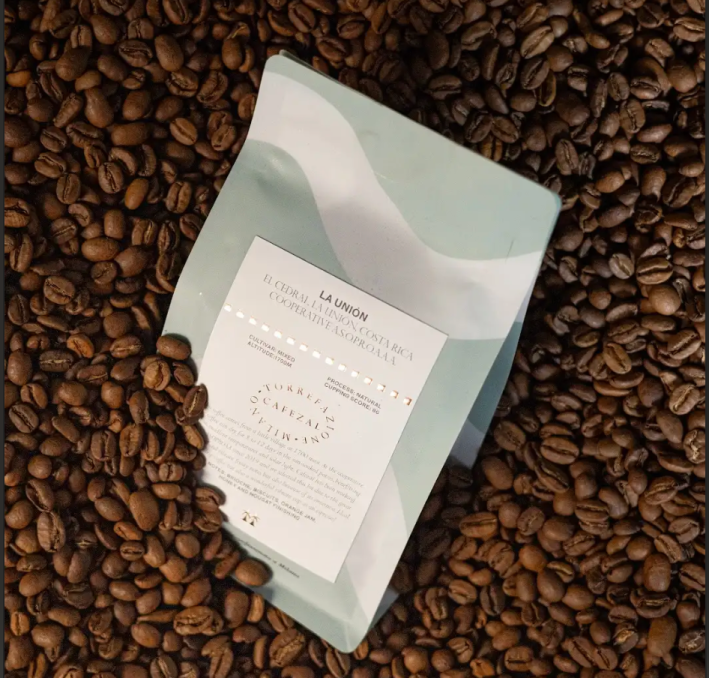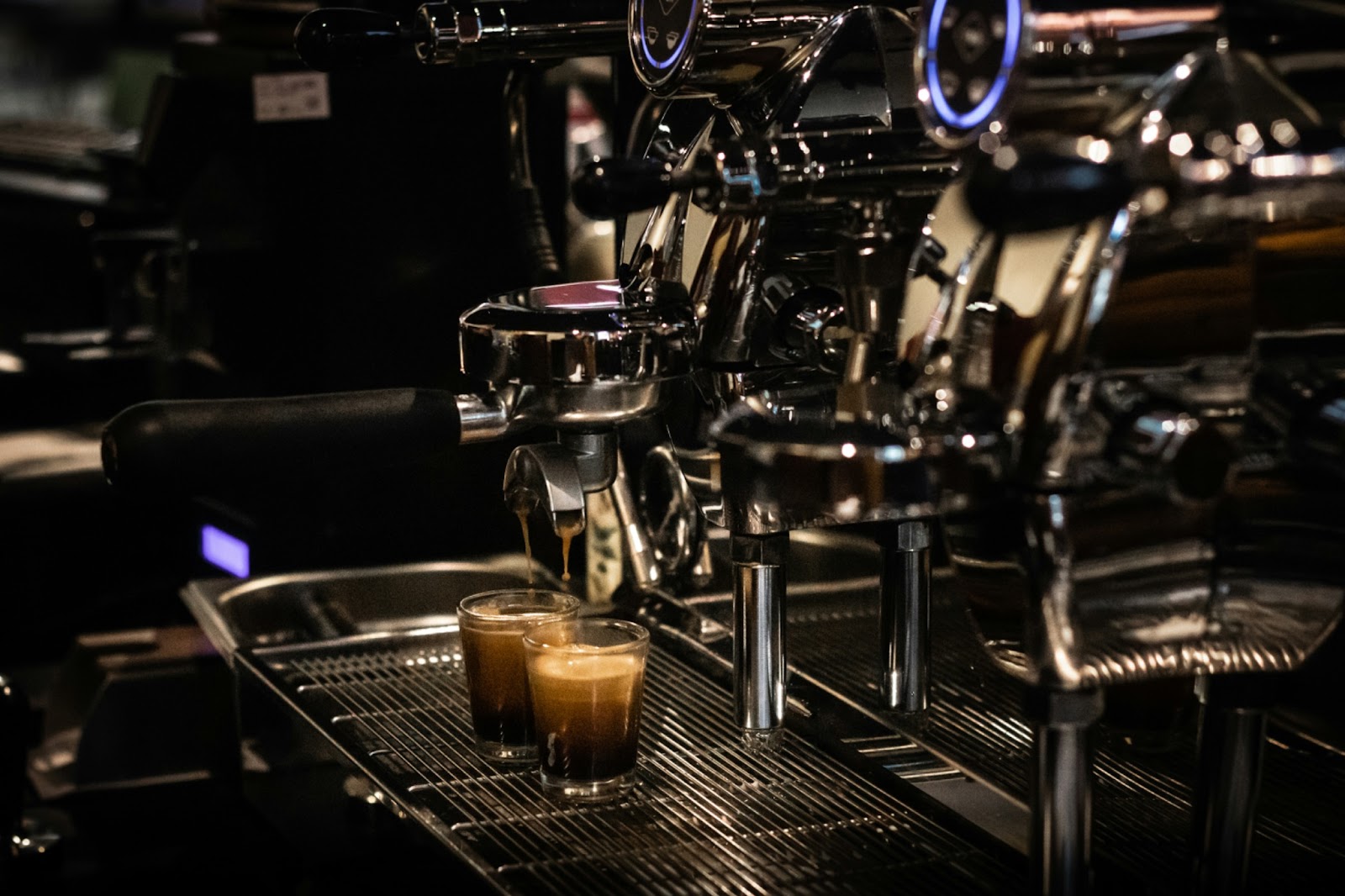For many, morning coffee is a ritual; for Italians, it’s a way of life. My morning is not complete without a chat with Lidy, the barista at my local bar in Milan. I’d be remiss if I didn’t have at least a single exchange with one of the characters of my neighborhood. Perhaps they’ll scold me for not wearing a scarf, maybe I’ll get barraged with questions about Times Square, or, most likely, I’ll hear a slice of someone’s life story. This all happens while standing at the marble-top bar holding the shortest drink known to man, a ristretto.
Italy is synonymous with espresso. Not only did Italians invent and perfect the espresso machine, but they’re also the fifth-largest consumer of coffee by volume. Someone has likely advised you about the many “Italian” coffee rules to follow while visiting (more on those later). Cafés—called bars here—are central to Italian social life. While they serve coffee throughout the day, most switch to spritzes for aperitivo hour — though I’ve seen many a pensioner savoring the vibrant pink cocktail well before it’s five o’clock anywhere. Most of the world’s favorite coffee drinks—macchiato, cappuccino, espresso—were crafted to satisfy the Italian craving for coffee.
The coffee obsession is so intense that, during World War II shortages, Italians tried using chicory and barley as substitutes to mimic the taste, though with limited success. Via a mix of historical and cultural events, intertwined with Mussolini and his short-lived coffee ban, Italians have found themselves enamored of the darkly roasted, bitter Robusta bean.

A New Era in Italian Coffee
Today, Milan is experiencing a craft coffee renaissance. Light roasts and small-batch production introduce a new flavor profile that departs from the traditional Italian palate.
I spoke with Carlos Bitencourt, founder and CEO of Cafezal, a specialty coffee roaster in Milan, and Jenny Basso, the brand's sales and collaborations manager, to learn about their Arabica-forward approach to the Italian market. We met in a bustling, large, and modern space. The countertops were dotted with every coffee-brewing mechanism imaginable, from the in-vogue V60 to the lowly drip machine (which sat unplugged in a corner due to its unpopularity). People were working on their computers in corners with flat whites and patrons waited at the bar for something quick. They roast their own beans and clearly dictate on the package which type is better for different brewing methods, such as more traditional (espresso, Moka) or modern (cold brew, V60). They also do to-go coffee, a rarity in Italy.
Cafezal has three locations in Milan, with a fourth bar and bakery on the way. I’m partial to the Magenta location. They’ve left the tiles and structure of the 1910s building, but have decorated the ceiling with their signature Cafezal palm tree motif. Bitencourt told me this was important when building his locations. He didn’t want to force carbon-copy boxes into the spaces, but instead hoped to enhance the natural features of the historic buildings in Milan. The mentality of retaining classic elements while embracing contemporary ideas may be precisely what allowed them to integrate into the Italian coffee world.
The Best of Both Coffee Worlds
Bitencourt tells me the Milanese are very open to the specialty coffee used at Cafezal: “They try it and they like it, and that’s what matters to them.” Good taste is paramount in Italy. The presence of the coffee seems to be more important than the coffee itself. Cafezal even provides specialty coffee education. “It is a pillar of growing the business,” says Bitencourt. “From our first location, we had a small table [for classes]; we’ve always done it.”

After meeting with Bitencourt and Basso, I took a sensory skills coffee class at Cafezal. An expert led us through the main differences between specialty and mass-produced coffee beans and production. We sniffed for flaws and learned why such distinctive taste profiles can be found in specialty beans. It was like a wine tasting you can feel good about doing at 10 a.m.
What about the overall Italian bar experience? Are cafe-goers stuck to the typical cornetto at Cafezal's locations? Basso says, “It’s not just the traditional products that sell most; it's very evenly distributed.” For example, their pastel de nata, a Portuguese custard tart, is a popular order. People are sitting down more, he says, even working while they drink their coffee. Doriano, a barista, culinary consultant, and friend, says COVID may have something to do with these cultural shifts in Milan. With the rise of remote working, people have discovered that coffee shops can be more than a place for an energy boost and a quick chat.
Cafezal and the other specialty coffee shops proliferating in Italy are providing diversity to the coffee experience. But, Basso says, “It's important to preserve that old coffee culture and in tandem have the people that are modernizing.” The coffee scene in Milan is modernizing, but not monopolizing. Like many things in my city, global influences are creeping in. Maybe soon, an Italian will ask for my personal go-to, a large black iced à la Dunkin', at 6 p.m., but I don’t think we’re quite there yet. The evolution of the scene is much more exciting. Coffee devotees who see it as a beverage to be lovingly fussed over are opening beautiful shops across the cities. Meanwhile, the consumer is taking more of an interest in details, from green coffee bean to cup, and perhaps, with education, will be willing to spend a bit more. (Though, rightly, few dare to price an espresso over 2 euros, or just over $2 US, here in Italy.) Those who punctuate their day with an espresso per hour now have both options, as the traditional coffee scene and the specialty coffee world co-exist.

Challening the "Rules" of Italian Coffee-Drinking
With the increasing modernization of Italian coffee culture, it seems anachronistic that I’ve seen more social commentary than ever on what rules you must follow. Some of them are true. You really shouldn’t order an espresso to go. It takes two minutes to drink. (It was even allegedly favored by bosses to shorten the worker’s coffee break.) Everyone has a spare two minutes—especially while on Italian time.
I personally tested the most well-known of Italian coffee commandments. As an experiment, I spent a week asking for a cappuccino in a cafe after 12:30 p.m. I was never denied. I asked my friend Lidy about the supposedly sacred rule. “That’s ridiculous,” she said, adding, “More Italians order cappuccino at 6 p.m. than foreigners; the foreigners are too scared.”
Basso says, “Similar to ice for your water, you just have to ask.” Undeniably, cities like Milan, Rome, and Florence may be more flexible to a foreign taste due to tourism. The golden rule is to use your best judgment. The nonna at the ancient cafe may give you a spritz instead of a cappuccino if she deems it too far into the afternoon (and you should be so lucky!). But maybe, within the burgeoning specialty coffee scene, your barista won’t bat an eye at your alternative milk request.

To anyone who lectures you about dairy being bad for your stomach after midday, consider the cherished Italian dessert, the affogato — coffee with gelato, usually served after a long dinner and well into the night. Not all rules are hard and fast. Good flavor always comes first!







